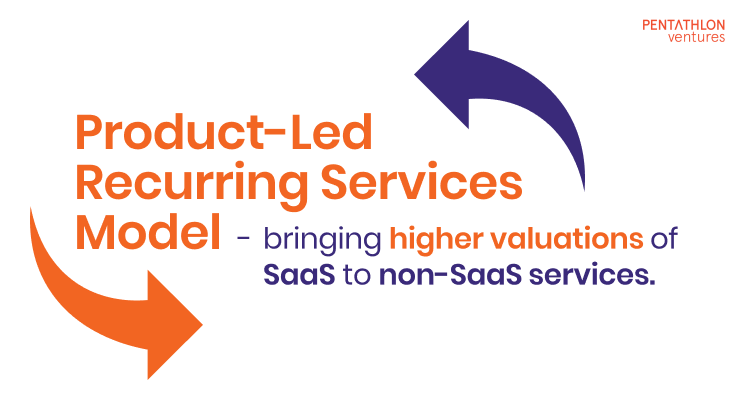By : Sudhanshu Srivastav (external contributor) with Gireendra Kasmalkar
Why do SaaS businesses command high ARR (Annual Recurring Revenues) multiple or forward-looking revenues? There’s a few reasons: the stickiness of the product, the predictability of recurring revenues and the high margins.
Companies providing IT solutions, support and services miss out on the high ARR multiple because their products usually have a one-time sale with support contracts. They can have longer support contracts, but this comes with a risk of margins getting thinner and high competition, as there aren’t many moats.
Consider this alternative approach: A company (for example an IT support one or any other recurring services company) builds a product which significantly reduces time and costs for delivering support services to clients. The company is then able to pass these savings on to the client.
If the company decides to sell the product to the client, the client may start doing the support work themselves or move to a different provider, leveraging the product.
But if the company includes the product (for free) as part of recurring services to the client via support contracts, this ensures stickiness with clients, revenues are recurring and savings are also passed onto the clients.
This approach — let’s call it the “Product-Led Recurring Services Model” can be the new competitive moat that provides high valuation for founders and investors, with higher exit multiples.
This approach need not be restricted to software products and services, but can be for any product and services which have regular consumption. Some examples could be:
- Marketing agencies managing performance marketing for FMCG companies
- Housekeeping agencies managing cleaning services for offices
- ITSM companies managing support for clients
- Security agencies managing security for facilities
How can service providers leverage a product?
Recently, I had an interesting discussion with a successful Marketing agency. They were leveraging an internal product to deliver stellar performance marketing for large clients (let’s call this Agency Services). They had also built a SaaS product to sell to customers who weren’t using their services. The aim was to generate recurring SaaS revenues and attract Venture capital in the future once they had decent traction.
The challenge with this option was that the SaaS product would have given the existing ‘Agency Services’ clients the option to shift to other service providers by leveraging the SaaS product. In short, the SaaS product would end up cannibalising Agency Services revenues.
Alternatively, the Marketing agency may have to let the profitable Agency Services revenues die if they wanted to just focus on selling the SaaS product.
Either option isn’t viable.
This SaaS model may also not appeal to VCs because of the above conflict. In this context, the idea of a “Product-Led Recurring Service Model” resonated with the founder. They were planning to explore the path of leveraging the SaaS product (by providing it for free) and leveraging that to sell the Agency Services.
In summary this model can be explored if:
- Consumption is repeatable, leading to recurring revenues.
- An internal Product/platform can be built to reduce cost and time to perform these services to clients.
- These savings can be passed down to clients, leading to clearly demonstrable competitive moat.
- This revenue stream has high profitability
The ‘Product-led Recurring Services Model’ in action
Facility Management Services: JLL leverages proprietary technology solutions to deliver facility management and security services to multiple clients.
Energy Management: Smart Joules provides energy solutions like JoulePAYS and Joule COOL and offers “Energy Efficiency as a Service”. They leverage technology for implementing new solutions as well as retrofitting existing systems leading to energy savings for clients. This is then implemented as a recurring revenue stream from clients. They raised $4M+ funding round in 2021.
Air Quality Management: Clairco provides “Clean Air as a Service”. They use their hardware and retrofit existing commercial HVAC systems with filters and provide SLA based payment terms.
B2B Procurement: ProcMart leverages their proprietary technology platform to do B2B procurement for large FMCG companies. They are able to eliminate major pain for their clients and also help in cost reduction. They raised a $10M funding round in 2022.
Logistics – Delivery: Fullfily provides “Delivery as a Subscription” providing last mile delivery for SMB’s and other clients. They reduce logistics costs and emissions significantly for clients leveraging EVs.
Do let me know what you think of this “Product-Led Recurring Services Model”! Do you think it’s doable? What are the challenges with implementing it?
Look forward to hearing your thoughts on this!
